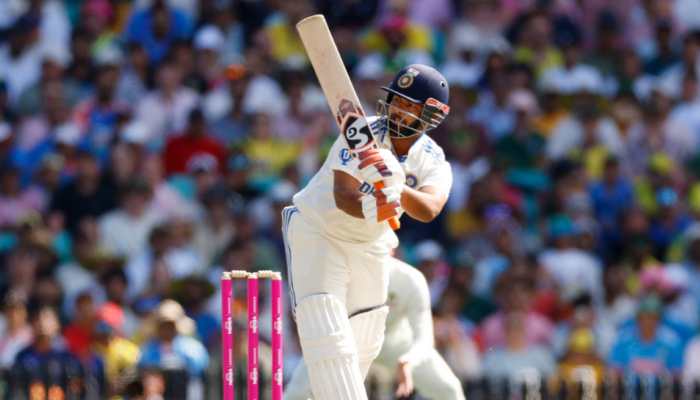Book traces journey of Satya Nadella
The book, published by Hachette India, is an insightful account of Nadella and what his appointment as the third CEO of Microsoft means for the future of the technology industry.
Trending Photos
)
New Delhi: Microsoft needs to drop its immense focus on the operating system and concentrate on the mobile, Cloud and connected device world, suggests a new book which traces the journey of its new CEO Satya Nadella.
The Windows-centric strategy may have placed Microsoft in good stead through its inception and till the early 2000s but the company's inordinate dependence of Windows has created for Microsoft an elephant of sorts that it has lately found difficult to ride, writes Jagmohan S Bhanver in "Nadella: The Changing Face of Microsoft".
The book, published by Hachette India, is an insightful account of Nadella and what his appointment as the third CEO of Microsoft means for the future of the technology industry.
"The almost-total fascination with Windows and the predominance of the OS have repeatedly deterred innovation since the emphasis has stayed on 'how to make Windows more profitable' rather than 'how to make Windows more innovative'," the book says.
According to the author, in Windows 8 Microsoft has endeavoured to address some of the issues it is facing by offering a single OS that works for laptops, desktops, tablets and phones.
"However, this too leaves something to be desired, as the touch interface is not altogether remarkable on the desktop and the laptop. What is needed is to bring innovation to the device and the OS to offer a smart phone that makes it easy and delightful for the customer to use," Bhanver, who is an executive coach to CEOs, says.
Given that the next battle for supremacy is likely to be fought in the Cloud platform, he suggests that Nadella could draw a leaf out of Google's strategy to create innovative Cloud services that could be used in everyday life.
"If Microsoft starts to see itself as a platform for Cloud services and focuses on providing enterprises and developers with the best tools and platform for developing Cloud services, it can become 'the' platform for Cloud services over the next few years," the author says.
The book also describes how the appointment of Nadella as CEO of Microsoft Corp. Has sent waves of curiosity, speculation and expectation through the tech world at home and abroad.
What drives the man chosen to lead tech giant Microsoft into the future? What does Nadella's appointment in particular herald for Microsoft and, indeed, for the tech industry as a whole? These are some questions that the book seeks to answer.
It provides a comprehensive look at Nadella's years in Hyderabad, his family, education and early influences; his constant engagement with innovation, his stellar achievements and rise within Microsoft's ranks; events within the organisation that led to his appointment, including an overview of the closest contenders for the post.
The book also says that the manner in which Microsoft went about searching for the next Chief Executive to succeed Steve Ballmer raised debate, especially within human resources circles worldwide.
"Ideally an organisation should have succession planning practices in place for all key positions in the company, not least of them the CEOs. The fact that Microsoft had to look around for a CEO for six months raised eyebrows about their succession strategy or the lack of it," Bhanver writes.
Finally Nadella was selected on February 4 ahead of the likes of Alan Mulally, CEO of Ford Motor Company; Steve Mollenkopf from Qualcomm; Julie Larson-Green, Qi Lu and Paul Maritz.
And with his appointment as the third CEO of Microsoft, Nadella joined the ranks of other Indian heads like Indra Nooyi of Pepsico, Vikram Pandit of Citigroup, Rana Talwar of Standard Chartered Bank and MasterCard's Ajay Banga.
The Windows-centric strategy may have placed Microsoft in good stead through its inception and till the early 2000s but the company's inordinate dependence of Windows has created for Microsoft an elephant of sorts that it has lately found difficult to ride, writes Jagmohan S Bhanver in "Nadella: The Changing Face of Microsoft".
The book, published by Hachette India, is an insightful account of Nadella and what his appointment as the third CEO of Microsoft means for the future of the technology industry.
"The almost-total fascination with Windows and the predominance of the OS have repeatedly deterred innovation since the emphasis has stayed on 'how to make Windows more profitable' rather than 'how to make Windows more innovative'," the book says.
According to the author, in Windows 8 Microsoft has endeavoured to address some of the issues it is facing by offering a single OS that works for laptops, desktops, tablets and phones.
"However, this too leaves something to be desired, as the touch interface is not altogether remarkable on the desktop and the laptop. What is needed is to bring innovation to the device and the OS to offer a smart phone that makes it easy and delightful for the customer to use," Bhanver, who is an executive coach to CEOs, says.
Given that the next battle for supremacy is likely to be fought in the Cloud platform, he suggests that Nadella could draw a leaf out of Google's strategy to create innovative Cloud services that could be used in everyday life.
"If Microsoft starts to see itself as a platform for Cloud services and focuses on providing enterprises and developers with the best tools and platform for developing Cloud services, it can become 'the' platform for Cloud services over the next few years," the author says.
The book also describes how the appointment of Nadella as CEO of Microsoft Corp. Has sent waves of curiosity, speculation and expectation through the tech world at home and abroad.
What drives the man chosen to lead tech giant Microsoft into the future? What does Nadella's appointment in particular herald for Microsoft and, indeed, for the tech industry as a whole? These are some questions that the book seeks to answer.
It provides a comprehensive look at Nadella's years in Hyderabad, his family, education and early influences; his constant engagement with innovation, his stellar achievements and rise within Microsoft's ranks; events within the organisation that led to his appointment, including an overview of the closest contenders for the post.
The book also says that the manner in which Microsoft went about searching for the next Chief Executive to succeed Steve Ballmer raised debate, especially within human resources circles worldwide.
"Ideally an organisation should have succession planning practices in place for all key positions in the company, not least of them the CEOs. The fact that Microsoft had to look around for a CEO for six months raised eyebrows about their succession strategy or the lack of it," Bhanver writes.
Finally Nadella was selected on February 4 ahead of the likes of Alan Mulally, CEO of Ford Motor Company; Steve Mollenkopf from Qualcomm; Julie Larson-Green, Qi Lu and Paul Maritz.
And with his appointment as the third CEO of Microsoft, Nadella joined the ranks of other Indian heads like Indra Nooyi of Pepsico, Vikram Pandit of Citigroup, Rana Talwar of Standard Chartered Bank and MasterCard's Ajay Banga.
Stay informed on all the latest news, real-time breaking news updates, and follow all the important headlines in india news and world News on Zee News.
Advertisement
Live Tv
Advertisement







)
)
)
)
)
)
)
)
)
)
